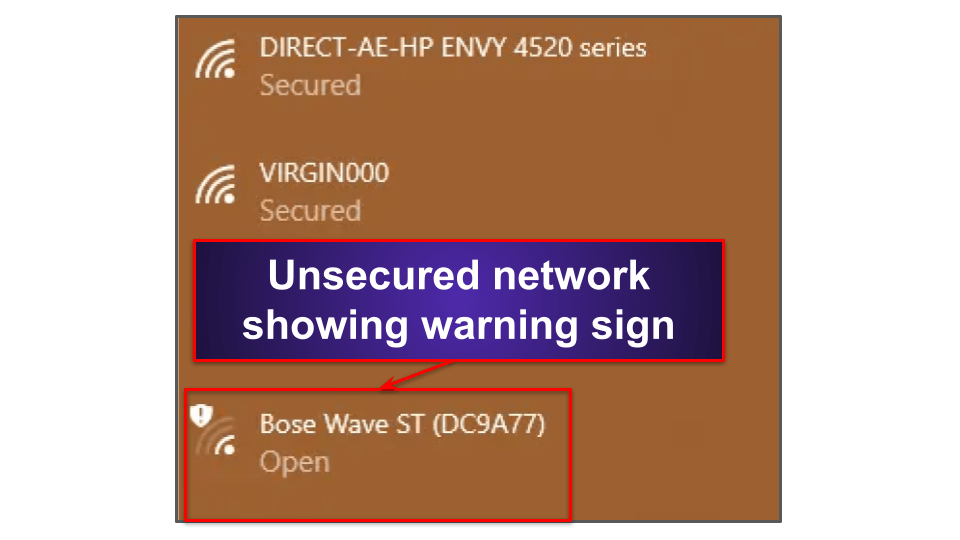Short on time? Here’s how to remove the Facebook virus in 2021:
1. Scan Device. Run a full system scan with a high-quality antivirus (Norton is the best).
2. Remove Virus. After the scan is complete, let the antivirus remove all instances of the Facebook virus.
3. Stay Protected. Protect yourself from further infections with a high-quality internet security package (again, Norton is the best).
The Facebook virus is a broad term for a group of malware and scams found in the Facebook or Messenger apps. There are a number of different ways hackers can infect users with the Facebook virus, including:
- Hijacking user accounts and spamming contact lists with malicious messages.
- Sharing posts on Facebook’s newsfeed that spread false information.
- Sending deceptive links and pages that lead to malicious or phishing websites.
- Sending private messages containing malware.
- Advertising contests to collect personal data.
The Facebook virus could be detrimental to your PC and, in turn, also for those on your contact lists. The Facebook virus could force your computer to slow down, expose you to unwanted or random pop-up ads, or even allow hackers to gain access to personal information like passwords and credit card information. Hackers can also take over your account and post messages that look like they’re from you — and contain links to malicious or phishing sites.
The good news is that the Facebook virus can be removed, but it can be very difficult to remove the virus manually — you may run the risk of changing or deleting something on your computer you don’t want to.
The best way to remove the Facebook virus is to use a top-quality antivirus program like Norton, which will safely remove the threats and also detect and block any future ones.
Quick Tip: Norton 360 is one of the best antivirus programs on the market and is very effective at removing the Facebook virus and other threats. While Norton doesn’t have a free plan, you can test the product risk-free with its 60-day money-back guarantee. You can purchase a subscription, scan and remove any viruses Norton detects, and then request a refund as long as it falls within the 60-day money-back guarantee window.
Step 1. Run a Full System Scan With Your Antivirus
If you think your computer may have been infected with a virus, disconnect all USB storage devices from your computer (including mobile phones). This helps prevent malware from potentially replicating onto your USB devices. If you’re suspicious, you can also use your antivirus to scan your removable storage devices, too.
The first — and most important — step is to run a full system scan using your chosen antivirus. The full system scan will take an in-depth look into your PC and quarantine every type of malware it discovers, including trojans, rootkits, cryptojackers, computer worms, spyware, and more. The scan can take up to 5 hours, so it’s best to leave your PC until the scan is finished, or you can schedule the scan for a more convenient time (when you’re not using the computer).
Never cancel a scan mid-way through, especially if the scan shows infections. Malware is able to replicate, so if you end a scan early, you’ll risk leaving possible other threats on your computer (many of these can cause long-lasting damage).
When the scan is completely finished, your antivirus will display all of the infected files it discovered and placed in quarantine. At this stage, you’re ready to move on to step 2.
Step 2. Delete Any Infected Files
The quarantine vault will show all of the infected files that your antivirus scanner identified. If you’re interested in learning more about these files, you can enter the threat name into your search engine — this is good practice since it’ll help you understand whether you should be changing your passwords, securing your accounts, or looking to recover/backup files. But the most important step to take is to delete the quarantined files.
Advanced users may want to check for false positives, and if a file is 100% safe, you can choose to keep it (by whitelisting it in your antivirus program).
When all threats are deleted or whitelisted, you need to restart your computer to disable any malware that might still be running in Windows memory. Some antivirus engines, such as Bitdefender, can also scan your boot sector when you restart your PC. Your boot sector is the area that controls what will be loaded into your computer’s memory. If there’s malware in your boot sector, a good antivirus will catch it upon restart.
When your computer has restarted and you’re logged back in, run a second full disk scan. This second scan is really important as the malware in your boot sector may have replicated itself before your antivirus had a chance to stop it from running. However, the second scan will run faster since antivirus programs can remember recently scanned files and only look at new changes.
If the second full disk scan finds more malware, delete the malicious files, restart your PC, and run a full disk scan again — you need to repeat this process until your computer is clear of any infected files.
However, you now know how deceptive hackers are and also how quick and easy it is for them to attack your computer on Facebook. For example, you should always double check with a contact if you receive a suspicious message or link from them. There are other safety measures you should take to prevent future infections.
Step 3. Keep Your Device From Getting Re-Infected
Facebook has over 2 billion active users in 2021, and that number is increasing. For cybercriminals, this means that every day, there are more chances to infect users with malware. However, you can easily ensure your protection and safety from the growing internet threats with safeguards in place. Here’s what you need to do.
Keep Your Software, OS, and Drivers Up-To-Date
This is a very important way to prevent hackers from reinfecting your computer. When security flaws (or vulnerabilities) are found in software, drivers, or programs, developers issue security patches to fix them. But obsolete or old software won’t have the security patches to defend against the latest threats in 2021, and it will allow cybercriminals to find ways to inject malware into your computer. Developers keep your computer safe by issuing updates and patches for the exploited software — so the only way you’ll be able to stay protected is to make sure you have the most recent versions of them.
There also are tools that you can download and use to help you stay 100% safe. Antivirus suites like Avira can scan your entire PC for issues, including obsolete software, drivers, or operating system files. My favorite thing about Avira’s feature is that it can automatically update any old software for you.
Another way of making sure your entire device is updated is to see if your apps include an auto-update option. Most apps have an auto-update feature, which triggers an app to download an update when you first open the app, and some apps that run in the background may allow the software to download an update on its own. To enable this feature, you either have to select “allow the application to update automatically” when first installing the app or look in the application’s settings to see if it allows you to enable this feature.
Don’t Download Suspicious Files
You should never download unfamiliar files or open suspicious attachments from strangers on Facebook — or your personal and work emails. If it’s someone you trust and you’re not expecting a link or file from them, contact them outside of Facebook and confirm that they sent you the file. Remember, there’s always a chance that their account has been compromised.
If you’re not friends with someone, Facebook will put any message a non-Facebook friend sends you into a Message Request folder. It’s best to ignore everything in the Message Request folder unless you know the person who is contacting you.
Finally, it’s very important that you choose an antivirus with real-time protection — it allows the antivirus to scan files in real time as you’re using your PC. Real-time protection scans email links, attachments, and any files or suspicious links you receive on Facebook. If the real-time protection detects malicious links or malware downloads, it will intercept them, keeping you safe from getting infected.
Secure Your Wireless Network and IoT Devices.
Even if all of your drivers are updated and you have real-time protection, you still need to secure your wireless network and internet of things (IoT) devices, such as thermostats, door cameras, and CCTV systems. The good news is there are very easy and affordable ways to protect your wireless network and IoT devices.
The best way to secure a wireless network is with a good virtual private network (VPN), like ExpressVPN. Hackers often use unsecured networks to inject malware into your PC or monitor your communications. You can recognize a public or unsecured network by spotting a warning sign in the network list.

If your own network is unsecured, you need to set a password. To do this, look up your router’s model number and brand to find individual instructions. Then, you need to log into your router’s settings on your computer and set a new password. Also, you’ll find the exact instructions in your router’s instruction manual.
IoT devices also need a secure password to prevent hackers from gaining access to them. Hackers can use tools like Mirai, which is malware software, to infect your IoT devices, allowing them to monitor and even make changes to your devices. To set a secure password for all of your IoT devices, follow the same steps that you did to set a password for your wireless network — check the device’s instruction manual or look online for a digital version of the manual.
After you follow the instructions for how to set a password for your network and IoT devices, purchase a top-flight password manager like Dashlane (Norton also has a good password manager). A password manager can create strong passwords, store your passwords in vaults that only you are able to access, and most use military-grade encryption, which is virtually impossible to crack. A password manager allows you to create passwords that you’ll never forget and keeps your wireless network and IoT devices safe from hackers.
Download a Secure Antivirus Program
You need to have a good antivirus in 2021 to stay one step ahead of cybercriminals. Antiviruses include many different features that protect you from hackers and prevent you from downloading or infecting your computer with malware. However, there are a lot of antiviruses on the market, and some are better than others — picking the best one for you can be overwhelming. You can make an informed decision by checking out our list of top 10 antiviruses in 2021. Norton is my favorite on this list, and here’s why:
Norton comes with:
- Anti-malware scanner. Allows a full, custom, or quick scan for malware you may have accidentally downloaded/installed onto your device.
- Real-time protection. Actively monitors your computer for malicious links and downloads. If Norton finds any malware, the real-time protection intercepts and blocks it from downloading.
- Firewall. Monitors network traffic to mitigate network-based attacks.
- Password manager. Generates and stores strong passwords so your accounts, WiFi network, and IoT devices can never be compromised.
- Cloud backup. Stores all of your essential files on the cloud, protecting you from ransomware attacks or malware that may damage or lock your hard drive.
- Parental controls. Allows you to monitor what websites your kids visit, files they download, and even restrict how long they can spend online.
- And more…
Frequently Asked Questions about the Facebook Virus
What does the Facebook virus do?
The Facebook virus is a generic term for a set of threats that can be sent through Facebook or Messenger. Attackers can be quite clever in disguising contests, messages, and posts with links that direct users to malicious or phishing websites. The Facebook virus can also spam your contact list or timeline with posts containing false information. If you suspect your computer is infected with the Facebook virus, follow these steps to clean your device.
How dangerous is the Facebook virus?
The Facebook virus can be as simple as a mild annoyance polluting your timeline or as serious as collecting your personal information and using it for malicious purposes. The Facebook virus can also install malware onto your device, affect its performance, or take control of even more personal data. If you think your device has been infected with the Facebook virus, follow these 3 simple steps to remove the virus from your computer.
How do I get rid of the Facebook virus?
The Facebook virus can be easily removed through an antivirus program. Norton is my preferred antivirus as its malware directory is constantly updated with the latest threats. Norton uses advanced heuristic analysis and machine learning technology that will help detect and block threats from infecting your account or device.
If your computer is infected with the Facebook virus, make sure to follow our steps and run a virus scan using a comprehensive malware scanner, like Norton. The scanner will remove all instances of malware it finds.
After you’re finished removing all malware:
- Avoid downloading files or opening attachments from strangers on Facebook.
- Always contact a Facebook friend on a platform outside of Facebook if you receive a suspicious file from them to confirm it actually was sent by them (they’re account may have been hacked).
- Don’t open any messages from strangers that Facebook places in your Message Request folder.
- Make sure you install an antivirus program with excellent real-time protection running in the background (I recommend Norton).
Source of Article



